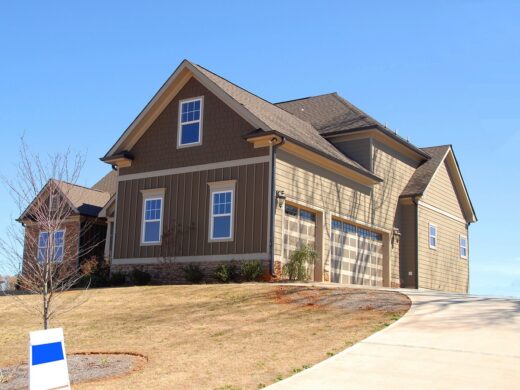Retirement planning for architects, how to build a comfortable future, Home improvements
Retirement Planning for Architects: How to Build a Comfortable Future
17 February 2025
Retirement is one of the most significant transitions in a person’s life, marking the shift from years of hard work to a period of relaxation, exploration, and personal fulfillment. For architects, retirement planning presents unique challenges due to the nature of the profession. Unlike traditional corporate careers with steady salaries and employer-sponsored retirement plans, many architects experience fluctuating income, project-based work, and the responsibility of managing their own financial future.
However, despite these challenges, a well-structured plan can ensure financial security and a fulfilling retirement. Just as designing a building requires foresight, careful planning, and a strong foundation, so does preparing for life after work. Whether you are an independent architect, a firm owner, or an employee, there are specific steps you can take to secure a comfortable retirement. In this guide, we will explore key strategies to help architects plan effectively, ensuring that their golden years are as rewarding as their professional careers.
Understanding Retirement Challenges for Architects
Architects face several industry-specific hurdles when planning for retirement:
- Irregular Income Streams: Unlike salaried employees, architects often work on a project-to-project basis, leading to inconsistent cash flow. This variability makes it challenging to commit to regular savings.
- Late-Career Peaks: Architecture is a profession where expertise and reputation build over time. Many architects earn significantly more in their later years, making early savings difficult but later contributions substantial.
- Limited Employer Benefits: While large architecture firms may offer 401(k) plans and other benefits, many architects work independently or in small firms, meaning they must take full responsibility for their retirement savings.
- Long Working Hours and Work Passion: Many architects love their work and find it hard to step away, making the transition to retirement more complex.
Steps to Achieve a Comfortable Retirement
- Start Saving Early
The sooner you begin saving for retirement, the more time your investments have to grow. Compound interest plays a crucial role in wealth accumulation, meaning even small contributions in your early career can make a significant difference over time.
- Set a Budget for Savings: Allocate a percentage of your income specifically for retirement.
- Automate Contributions: Set up automated transfers to retirement accounts to ensure consistency.
- Gradually Increase Contributions: As your income grows, increase your savings rate to maximize future financial stability.
- Choose the Right Retirement Accounts
Different retirement accounts provide various benefits depending on your employment status:
- For Self-Employed Architects:
- SEP IRA: A Simplified Employee Pension (SEP) IRA allows for high annual contributions with tax advantages.
- Solo 401(k): Ideal for those working independently or in small firms, offering high contribution limits and tax benefits.
- For Employees in Firms:
- 401(k) or 403(b) Plans: Many larger firms offer these plans, and it’s essential to maximize employer-matching contributions.
- Traditional or Roth IRA: An excellent option for additional savings beyond employer-sponsored plans. Keep in mind that IRA deduction income limits may affect your ability to deduct contributions if you or your spouse have access to a workplace retirement plan. It’s important to check IRS guidelines each year to determine your eligibility.
- Diversify Investments
A diverse portfolio helps mitigate risk and maximize returns. Consider the following asset classes:
- Stocks and Bonds: A mix of equities for growth and bonds for stability ensures a balanced portfolio.
- Real Estate: Many architects have expertise in property valuation, making real estate a strategic investment choice.
- Alternative Investments: Consider investing in REITs (Real Estate Investment Trusts), design-related businesses, or digital assets.
- Plan for Long-Term Financial Stability
Ensuring financial security involves more than just savings and investments. Consider these essential aspects:
- Reducing Debt: Aim to pay off major loans, including mortgages, before retirement to reduce financial burdens.
- Building an Emergency Fund: Maintain a separate savings account with at least 6-12 months of living expenses.
- Health Care Planning: Look into long-term care insurance and understand Medicare and supplemental health plans.
- Legal and Estate Planning: Set up a will, power of attorney, and trusts if necessary to protect your assets and loved ones.
- Develop a Post-Retirement Income Strategy
Many architects choose to remain engaged in their field even after retiring. Options to maintain a steady income include:
- Freelance or Consulting Work: Taking on selective projects for supplemental income and professional fulfillment.
- Passive Income Streams: Consider rental properties, dividends from investments, or monetizing architectural knowledge through digital platforms.
- Teaching and Mentoring: Universities and firms often seek experienced architects for guest lectures and training sessions.
- Writing and Publishing: Sharing expertise through books, blogs, or architectural journals can provide both income and recognition.
- Lifestyle Planning
A successful retirement isn’t just about finances; it’s about how you spend your time. Architects can enjoy retirement by:
- Traveling the world to explore and study architecture.
- Engaging in hobbies such as sketching, photography, or sustainable design projects.
- Volunteering for community-based architectural projects or non-profits.
- Staying socially active through professional networks or alumni associations.
Conclusion
Retirement planning for architects requires careful consideration and proactive strategies to overcome unique industry challenges. By saving early, choosing the right investment vehicles, diversifying income sources, and planning for long-term stability, architects can design a retirement that mirrors the precision and creativity they apply to their projects.
Just as great architecture requires a strong foundation, so does a successful retirement. With a well-thought-out financial plan, architects can transition into retirement with confidence, security, and the ability to continue pursuing their passions. Whether you dream of traveling the world, consulting on select projects, or enjoying a relaxed lifestyle, taking the right steps today will ensure a fulfilling and financially stable future.
Comments on this Retirement Planning for Architects: How to Build a Comfortable Future article are welcome
Mortgages and Home Finance
Mortgages Posts
How to improve your life with equity release

How to Fund Your Home Improvement Using Equity Release
Pros and cons of 15-year vs. 30-year mortgage
Are You in the Gray Area in Your Mortgage?
Building Articles
Contemporary Properties – a recent selection from the e-architect website:
Design: Strom Architects
Ghyll House, East Sussex Property
Sea Breeze, Camber Sands beach, Sussex, England, UK
Design: RX Architects
Sea Breeze on Camber Sands beach, East Sussex
Comments / photos for the Retirement Planning for Architects: How to Build a Comfortable Future page welcome






